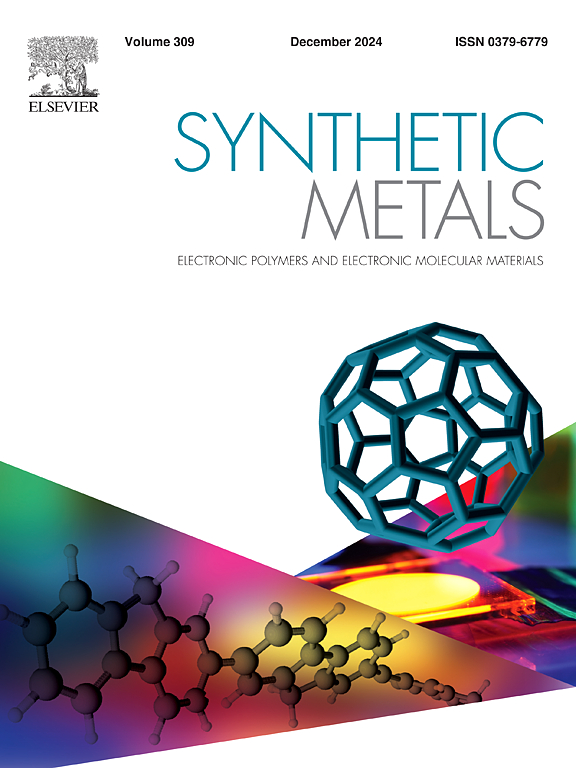Unveiling the ligand effects on Pt(Ⅱ) carbene complexes for rapid, efficient and narrow-spectra blue phosphorescence
IF 4
3区 材料科学
Q2 MATERIALS SCIENCE, MULTIDISCIPLINARY
引用次数: 0
Abstract
Tetradentate Pt(II) complexes, comprising of benzoimidazolyl N-heterocyclic carbene (BI-NHC) coordination, have shown superior performance in blue phosphorescent organic light-emitting diodes (PhOLEDs). Here, four frame-structured complexes were synthesized to explore the intrinsic ligand effect for rapid, efficient and narrow-spectra blue phosphorescence through experimental analyses and theoretical calculations. We found carbazolylpridine (CzPy) chelating part in Pt(II) BI-NHC complexes dominates the phosphorescence with the suppression of metal-centered transition and electron-vibration coupling. Consequently, the CzPy chelated complexes (PtN-dip and PtN-dtb) achieved high luminescent efficiency, rapid radiative decay rate (kr) and narrow emission spectra. The peripheral substituent 2,6-di-iso-propylphenyl (dip) on NHC of PtN-dip constrains the molecule, significantly reducing the non-radiative decay rate (knr) and enhancing the efficiency. The 3,5-di-tert-butylphenyl (dtb) in PtN-dtb could enhances low-frequency vibration coupling that could expedite the excitons decay, resulting in higher kr and knr. This work unveils the intrinsic factors behind the ligand effects of Pt(II) BI-NHC based complexes, leading to a rapid, efficient and narrow-spectra phosphorescence.
揭示配体对 Pt(Ⅱ)碳烯配合物快速、高效和窄谱蓝色磷光的影响
由苯并咪唑N-杂环碳烯(BI-NHC)配位组成的四价铂(II)配合物在蓝色磷光有机发光二极管(PhOLED)中表现出卓越的性能。在此,我们合成了四种框架结构的配合物,通过实验分析和理论计算,探索配体对快速、高效和窄谱蓝色磷光的内在效应。我们发现,Pt(II) BI-NHC 复合物中的咔唑基普利丁(CzPy)螯合部分在抑制金属中心转变和电子振动耦合的作用下主导了磷光。因此,CzPy 螯合配合物(PtN-dip 和 PtN-dtb)具有高发光效率、快速辐射衰减率(kr)和窄发射光谱。PtN-dip NHC 上的外围取代基 2,6-二异丙基苯基(dip)限制了分子,显著降低了非辐射衰减速率(knr),提高了发光效率。PtN-dtb 中的 3,5-二叔丁基苯基(dtb)可以增强低频振动耦合,从而加快激子衰变,导致更高的 kr 和 knr。 这项研究揭示了基于 BI-NHC 的 Pt(II) 复合物配体效应背后的内在因素,从而产生快速、高效和窄谱的磷光。
本文章由计算机程序翻译,如有差异,请以英文原文为准。
求助全文
约1分钟内获得全文
求助全文
来源期刊

Synthetic Metals
工程技术-材料科学:综合
CiteScore
8.30
自引率
4.50%
发文量
189
审稿时长
33 days
期刊介绍:
This journal is an international medium for the rapid publication of original research papers, short communications and subject reviews dealing with research on and applications of electronic polymers and electronic molecular materials including novel carbon architectures. These functional materials have the properties of metals, semiconductors or magnets and are distinguishable from elemental and alloy/binary metals, semiconductors and magnets.
 求助内容:
求助内容: 应助结果提醒方式:
应助结果提醒方式:


